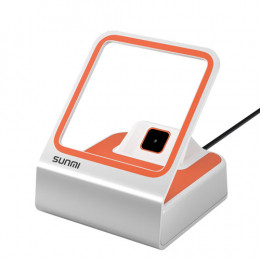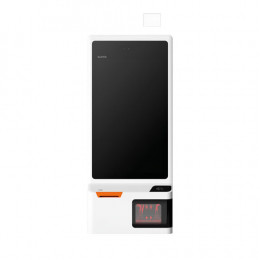The barcode turns 50: A look at its impact on the modern world
On 26 June 1974, the first barcode scanner was used in an Ohio supermarket, ushering in a revolution in product tracking and management.
Since then, the barcode has become a ubiquitous tool in our daily lives, and this year we celebrate its 50th anniversary.
In this article, we explore the impact of the barcode on the modern world and how it has transformed the way we buy, sell and manage products.
The birth of the barcode
The barcode, also known as the UPC (Universal Product Code) barcode, was created by George J. Laurer, an IBM engineer, who developed a system for encoding product information in a series of parallel vertical lines of varying thickness.
The barcode allowed data about the manufacturer, the product and its price to be stored quickly and accurately.
Efficiency and accuracy: Transforming the retail industry
Before the implementation of the barcode, inventory and sales processes in shops were time-consuming and prone to human error. However, with the introduction of the barcode, data collection became more efficient and accurate.
Cashiers could scan products quickly, eliminating the need for manual price entry and avoiding confusion.
In addition, retailers could track inventory more efficiently and optimise their logistics operations.
From the supermarket to everywhere: Barcoding in different industries
While the industrial scanner became popular in the retail industry, its usefulness quickly spread to other areas.
Today, barcodes are used in a wide range of industries, from logistics and manufacturing to healthcare logistics and library management.
Barcodes can identify and track products, manage workflows, improve efficiency and ensure traceability in a variety of operations.
QR codes and beyond
As technology has advanced, the barcode has evolved and new variants have been developed. One of the most prominent examples is the QR (Quick Response) code, which has become increasingly popular in recent years.
QR codes can store significantly more information and allow interaction with digital content, such as links to websites, promotions and payment functions.
Challenges and future prospects
Despite the enormous advances in barcoding, there are challenges and limitations to be overcome. For example, the need for a direct line of sight to scan barcodes can be a limitation in certain situations.
In addition, the growing demand for traceability and security in the supply chain is driving the development of more advanced technologies, such as radio frequency identification (RFID) and cloud computing.
As we move into the future, we are likely to see further integration of technologies such as machine learning and artificial intelligence to further improve product management and the consumer experience.
However, regardless of future innovations, the barcode will remain a fundamental pillar of product tracking and management in the modern world.
All in all, the barcode is 50 years old, and its impact on our society cannot be underestimated. From its humble beginnings in a supermarket in Ohio to its presence in every corner of the globe, the barcode has driven efficiency, accuracy and traceability in a wide range of industries.
In today's world, where speed and accuracy are essential, it is important to celebrate the legacy of the barcode and recognise its role in shaping our modern lives.
Those simple patterns of vertical lines have left an indelible mark on the past, present and future of product management and business interaction.









